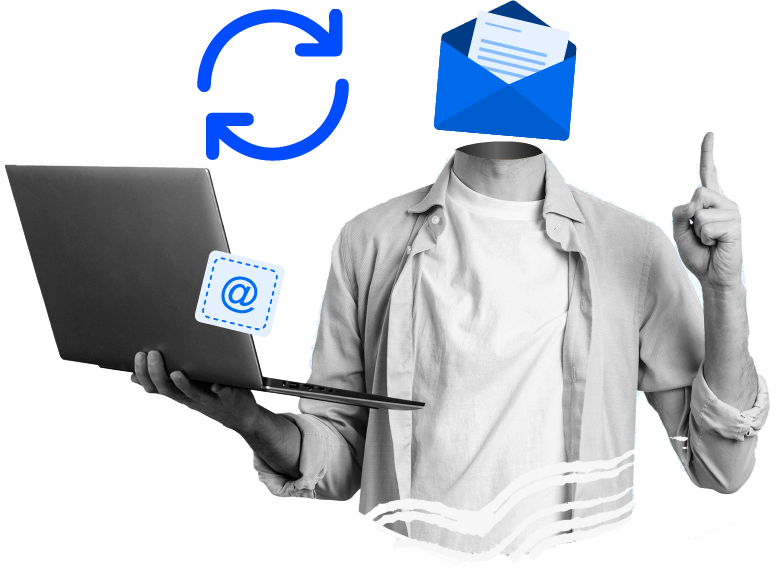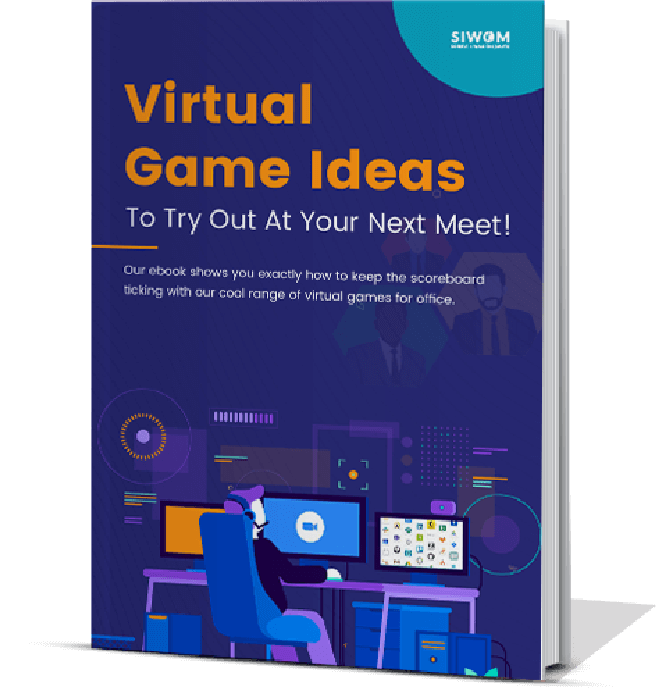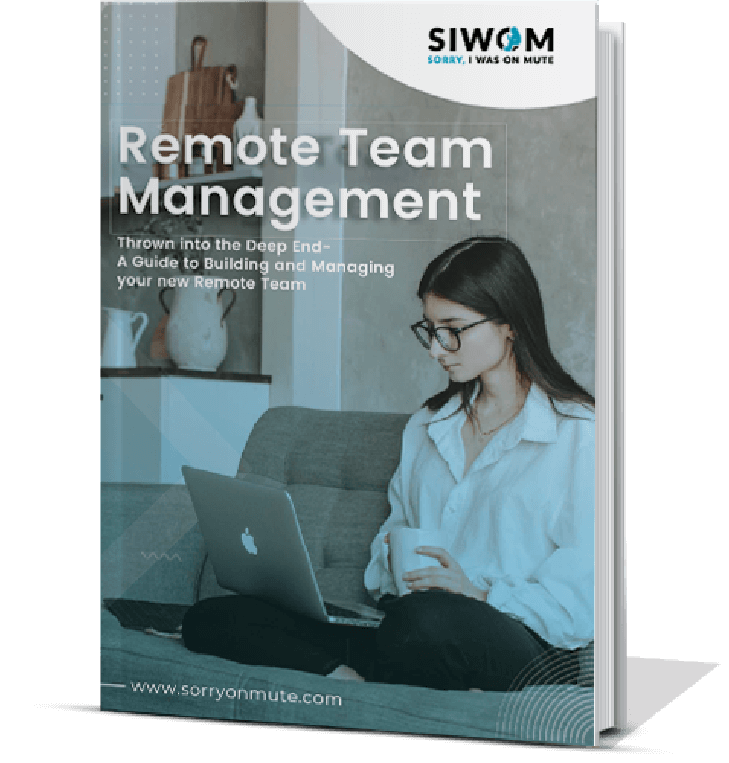Diversity and inclusion activities are not just an HR strategy that needs to be ticked off the checklist, but an ongoing initiative to create a workplace where all employees feel valued and appreciated for their individuality. Supporting diversity and inclusion in your workforce brings a greater breadth of perspective and ingenuity.
Additionally, clearly stated policies around inclusion can be a key factor in retaining talent. There are numerous diversity and inclusion team building activities you can employ to highlight and celebrate the differences and similarities that foster a thriving business.
1. What Does Diversity and Inclusion in the Workplace Imply?
Diversity and inclusion (also known as D&I) is about making sure everyone in a company is welcome and heard, regardless of gender, race, or any other relevant factors. The term is also used to refer to the business policies implemented to create equitable working conditions so that all staff are treated fairly and without differentiation based on their gender, age, physical characteristics, social background, or culture.
Diversity and inclusion activities in the workplace benefit the company beyond its corporate social responsibility commitments. An ongoing study by consultancy McKinsey has demonstrated that diversity, equity, and inclusion policies are also linked to positive financial performance.
2. 16 Best Diversity and Inclusion Activities in the Workplace
2.1. DEI Activities With Hooray Teams

If you are looking for a professional host to help you organize and host DEI activities for teams in the interest of team building then Hooray Teams is one of the best options. This awesome virtual team-building platform knows how to keep your remote and hybrid teams engaged with their fun online workshops, virtual games, and fitness sessions. They've got all the diversity and inclusion games covered, hosting everything smoothly to make sure you and your team have a blast.
How To Organize: Simply contact them on their website and share your custom needs or team preferences so they can handle the rest.
2.2. Draw a Diversity Flower
This is a popular diversity and inclusion icebreaker activity. You can use a collaborative digital whiteboard tool like Miro or Jamboard to create a Diversity Flower. Invite team members to fill in petals representing different dimensions of diversity.
How To Play: Divide participants into groups of 4 to 8. Each group will be given a large piece of paper and colorful markers. Start by drawing a large flower on a piece of paper. This flower should have a circular center and petals equal to the number of people in the group. Encourage everyone to discuss something unique about themselves that relates to their traits or abilities – these make up the petals. In the circular center, write something that everyone in the group shares. Once everyone has completed their flower, swap the drawings around and encourage a discussion on the similarities and differences.
2.3. Diversity Workshops
Diversity and inclusion activities in the workplace do not have to be super elaborate. Even something as simple as a workshop can help broaden perspectives, encourage more acceptance, and create better awareness around diversity and inclusion. These workshops can cover a range of topics such as unconscious bias, inclusive leadership, and more that are related to diversity, equity, and inclusion (DEI). The aim is to create an environment where individuals from all walks of life feel valued and supported
How To Organize: Invite guest speakers to give briefings about different aspects of D&I, such as the 7 Pillars of Inclusion framework. Alternatively, ask employees from different backgrounds to discuss their cultural differences, and challenges they face, and also share inspiring stories. This has the benefit of not only increasing understanding but also creating a foundation for team members to build respect for each other and foster closer interpersonal connections.
2.4. Snapshot Board
This is a fun and creative addition to diversity and inclusion activities in the workplace. It allows employees to share personal stories and experiences in a pictorial summary format. Employees benefit from not only getting to know one another better but they also learn something at the same time.
How To Organize: Ask people to share photos that reflect their cultural backgrounds like those that show them celebrating holidays, and showcase different aspects of their lifestyles. Then create a collage of the photos in a physical format for an in-office display board or a digital album on a website.
2.5. Organize a Book Club

Starting up a company book club encourages people to explore new narratives. Books act as a window into other people’s lives. You can set up a book club as one of your in-person or virtual diversity and inclusion activities in the workplace. Books like Better Allies, White Fragility, and DEI Deconstructed are a good starting point.
How To Organize: Each month or quarter, select a book around a theme that promotes D&I, such as an LGBT story or a book translated from a different language. Alternatively, get everyone to read and discuss a book like Blindspot: Hidden Biases of Good People, which dissects the unconscious biases caused by things like culture, social class, and nationality.
2.6. Multicultural Potlucks
With food playing such a big part in most cultures, what can be a better DEI activity than a potluck luncheon? Not only do you get to taste some delicious dishes but you learn something too! Some sure-shot crowd-pleasers for a potluck include curry, sushi, and dim sum. Remember that this doesn’t have to be something necessarily from an individual’s culture of origin but might also be something from their adoptive culture as well. After all, our lived experiences are part of what makes us diverse.
How To Organize: Designate a day when everyone brings in an appetizer, main, side, or dessert from their childhood or heritage. You can clarify beforehand by creating a shared document for people to put who will bring what, or you may end up with seven sweets and no savories!
2.7. I Am, But I Am Not
I Am, but I Am Not is all about challenging preconceptions concerning gender, race, sexuality, etc. It can be one of the more revealing diversity event ideas in the workplace. It is all about challenging preconceived notions and encouraging conversations. However, one needs to ensure that the team is respectful and sensitive to each other's feelings.
How To Play: Each person is given a piece of paper, which they then divide into two columns. One column is headed ‘I Am’, while the other is headed ‘But I Am Not.’ Under ‘I Am,’ each participant should write down a self-identifier, while under ‘I Am Not’ they should inscribe a stereotype about their self-identifier which is untrue. Once everyone has written several sentences along these lines, individuals take turns to discuss what they’ve written.
2.8. Step Apart and Step Together
How do you teach diversity in a fun way? With a game, of course! One of the more entertaining diversity and inclusion activities in the workplace, Step Apart and Step Together helps people to recognize their similarities and acknowledge their differences.
How To Play: Divide people into pairs and have them stand opposite one another. A designated host then calls out diversity groupings, such as age, religion, or ethnicity. When the pair have a difference, they step apart; when they have a similarity, they step together.
2.9. Create a Life Map
If you are looking for DEI ideas for the workplace that cater to large groups, the life map is perfect. Through this activity, teams not only understand where their co-workers come from but also what their future goals and aspirations are. This helps them better understand each other.
How To Play: Distribute paper and pens to your team and ask them to write down key moments in their past, as well as hopes for the future. These pieces of paper are then placed in a hat and individually drawn out. From what has been written on the paper, colleagues then guess who created which life map, discussing the elements in a considerate way as you go along. Consider concluding the activity by asking each person to pick out something they were surprised to learn about their coworkers.
2.10. Do the Privilege Walk

One of the staples of diversity and inclusion activities in the workplace is the Privilege Walk. This simple activity showcases the different experiences that people go through. Sometimes people who come from a place of privilege don’t realize how much small things have contributed to their success.
How To Play: Ask your staff to stand shoulder to shoulder in the middle of a fairly large space and close their eyes. Next, read out a mix of statements related to privilege. For example, ‘If one or both of your parents graduated from college, take one step forward.’ Positive statements that ask people to step forward should be balanced with negative statements that ask them to step back, e.g., ‘If you have ever been called names regarding your race, take one step back.’ After you’ve finished your list of assertions, ask everybody to open their eyes. Complete the activity by asking everybody to sit down together and discuss what they’ve learned and how the activity made them feel.
2.11. Encourage Volunteering
Volunteering has many workplace benefits, several of which relate to diversity and inclusion. Volunteer work can give staff a different perspective on life and allow them to understand the struggles of people from different backgrounds. This experience helps employees develop cultural sensitivity and awareness, fostering a more inclusive mindset within the workplace.
How To Organize: This activity can include working at a homeless shelter, distributing food at a soup kitchen, or mentoring children from disadvantaged backgrounds.
2.12. Host Guest Speakers

Whether in a virtual or physical space, guest speakers can be one of the most impactful inclusive activities for meetings. Expert speakers offer professional insight into common issues such as neurodiversity, gender representation, and disability awareness. You can also ask if any members of staff want to do a lunch and learn or presentation on a topic that they are familiar with
How To Organize: You can conduct this activity both virtually, if your team is remote, or in-person as well. Reach out to authors and leaders in the DEI space and ask them to share their thoughts with your team. They can also suggest a tried-and-true framework for how D&I is addressed in the workplace.
2.13. Host Movie Nights
Film sessions can be a subtle way to address equity in the workplace. In addition to the general team-building aspect, a movie night with colleagues can be used to initiate discussion about diversity and inclusion.
How To Organize: You can rent a projector, visit a movie theater, or set up a virtual screening. Netflix often curates media based on D&I themes like black history month. There are a lot of different genres of movies you can watch to address D&I, from comedies like The Intern to documentaries like The Invisible War.
2.14. Icebreaker Sessions

Diversity and inclusion activities in the workplace don’t get simpler than a set of questions designed to foster communication and openness. Before getting into grittier topics surrounding diversity equity and inclusion icebreakers, it can be helpful to let people get to know each other a bit first.
How To Organize: For example, as diversity icebreaker activities, you could ask about favorite meals, first trips abroad, the origin of an individual’s name, or best childhood memories. You could even ask them about some diversity icebreaker activities they’ve done before. Encourage participants to provide more detailed answers rather than one-line responses.
2.15. Host a Happy Hour

One of the most fun diversity and inclusion activities in the workplace, of course, happy hour. With a little alcohol as a kickstarter, staff may find it easier to loosen up and engage more candidly with one another to develop closer relationships. Even if you’re not up for hard drinks, the ambiance of a local bar, pub, or lounge can help facilitate conversations better.
How To Organize: This more relaxed social setting is a great way to foster inclusion and networking within a smaller team or a wider department. Just make sure your staff don’t get too carried away! It might be a good idea to supply some snacks as well to offset the booze.
2.16. Diversity Bingo
Diversity Bingo is a fun and interactive game designed to help employees learn more about each other's diverse backgrounds and experiences. Try and ensure that the prompts you use for these kinds of themed diverse games for work vary and reflect the diversity in your office.
How To Play: The format of playing is the same as classic Bingo. There is a bingo card that includes statements instead of numbers. Some fun diversity questions examples of what can be on the card include "speaks multiple languages," "has traveled to another country," "has volunteered for a social justice cause," or "is part of an underrepresented group."
For more team-building ideas, have a look at our article on virtual reality team building. For a more health-focused approach, check out these virtual team health challenges you can try out with your remote team.
3. FAQs
3.1. What are good examples of diversity and inclusion in the workplace?
The best diversity and inclusion activities in the workplace tackle issues of bias and prejudice in a way that provokes thoughtful discussion. It’s important that everybody should be made to feel comfortable asking questions and expressing personal stories.
3.2. How can you promote diversity and inclusion in the workplace?
The first step is often to have clearly stated diversity, equity and inclusion mission statements in place. You can then arrange for diversity exercises, guest speakers and other diversity and inclusion activities in the workplace to reinforce these messages.
3.3. What are inclusive activities?
Inclusive activities promote a sense of belonging and improve general team dynamics. These can range from more informal setups like movie nights and happy hours, DEI icebreaker activities to asking people to participate in training sessions around workplace practices.
3.4. What are some diversity topics for meetings?
Some diversity topics for meetings are unconscious bias, inclusive language, microaggressions, and intersectionality.
3.5. What are some DEI ideas for the workplace?
Some fun diversity team building activities include working on diversity project ideas like diversity training activities and a diverse speaker series. Additionally, companies can also work on inclusive hiring initiatives and cultural competence workshops.
 Interested in Virtual Team Building Events?
Interested in Virtual Team Building Events?





















